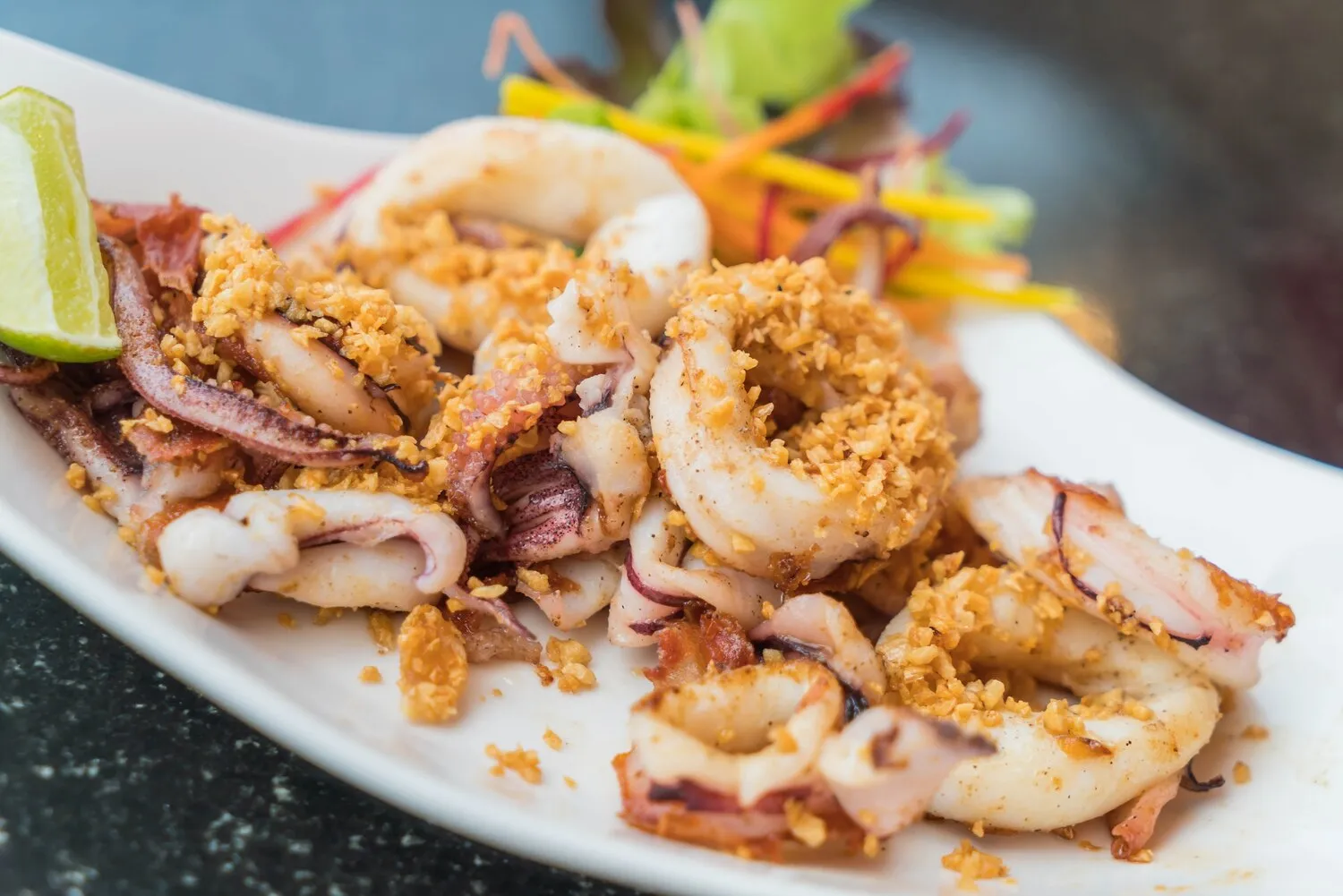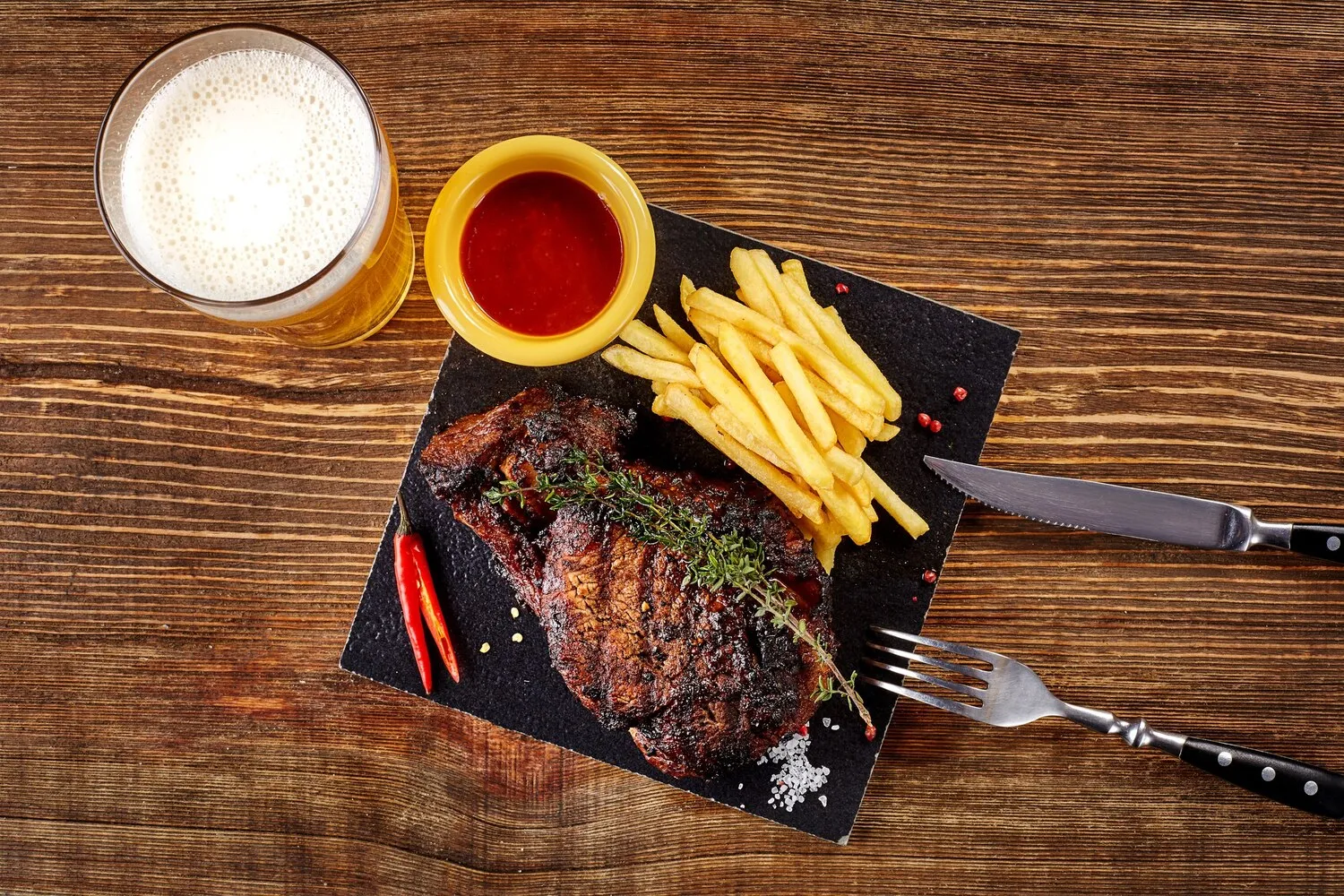
Côte de Boeuf
A large, bone-in ribeye steak, often shared between two people. A signature dish.
Nutrition Facts
* The % Daily Value (DV) tells you how much a nutrient in a serving of food contributes to a daily diet. 2,000 calories a day is used for general nutrition advice.
Côte de Boeuf, meaning 'rib of beef', has deep roots in French culinary tradition, stemming from a time when large cuts of meat were a symbol of prosperity and celebratory feasts. Butchery techniques and grilling expertise were refined over centuries, contributing to its current form.
Côte de Boeuf is often associated with celebratory meals, family gatherings, and special occasions, representing indulgence and shared enjoyment of high-quality food. It signifies a appreciation for classic French culinary tradition.
Communal Dining
The large size of Côte de Boeuf makes it ideal for sharing, fostering a sense of community and conviviality at the table.
Symbol of Affluence
Due to its premium nature and size, Côte de Boeuf is often seen as a symbol of affluence and celebration, reserved for special events.
French Gastronomy
It exemplifies the French emphasis on quality ingredients and simple preparation techniques to highlight natural flavors.
The dominant flavors of Côte de Boeuf are rich, beefy, and savory, enhanced by the bone and marbling. Simple seasoning allows the quality of the meat to shine.
The intense beef flavor comes from the ribeye muscle's fat marbling and proximity to the bone, which imparts flavor during cooking. The crust, developed during searing, offers a smoky, caramelized note, contrasting with the juicy, tender interior. Seasoning typically consists of salt and pepper, sometimes with herbs like thyme or rosemary for subtle aromatic complexity.
Choosing the Right Cut
Look for a well-marbled cut with a thick bone and generous fat cap. Dry-aged beef offers a more intense flavor.
Proper Seasoning
Generously season the steak with salt and pepper at least an hour before cooking to allow the salt to penetrate the meat.
Searing for Crust
Achieve a deep, flavorful crust by searing the steak in a hot pan with oil or butter before transferring it to the oven or grill.
Temperature Control
Use a meat thermometer to ensure accurate cooking. Aim for medium-rare (130-135°F) or medium (135-140°F) internal temperature.
Resting is Key
Allow the steak to rest for at least 10-15 minutes after cooking to allow the juices to redistribute, resulting in a more tender and flavorful steak.
Explore additional Classic French Bistro dishes and restaurants
Explore Classic French BistroDiscover top dining spots and culinary experiences in Zwolle.
Explore ZwolleLearn more about the food culture, restaurant scene, and culinary heritage of Netherlands.
Explore Netherlands
